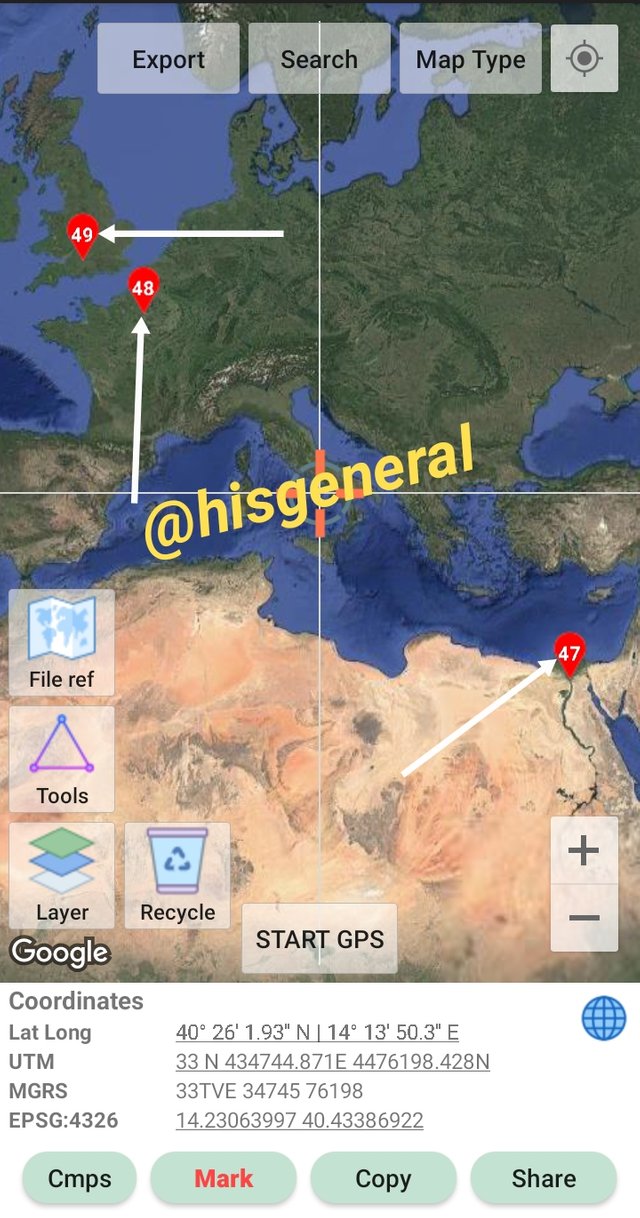
Hi guys, it's a pleasure to once again welcome you to my publication. It has been great getting a deeper knowledge of GPS, and in this publication, we will be looking into yet another interesting aspect of the subject matter.
| 1. Create a new project in UTM Geo Map and Save it (Select it as an active project) |
|---|
How to do this has been explained before now, so I just had to go straight ahead to do justice to it. I created a new project with the name "@hisgeneral" and description "SLC/S22/W4" and then set it as an active project.
| 2. Brand at least 3 of these Coordinate Points: |
|---|
| Point 1 | 319379 E 3317224 N | Zone 36 |
| Point 2 | 448205 E 5411933 N | Zone 31 |
| Point 3 | 766201 E 8543369 S | Zone 18 |
| Point 4 | 291976 E 4640623 N | Zone 33 |
| Point 5 | 582056 E 5670371 N | Zone 30 |
| Point 8 | 206912 E 3009266 N | Zone 44 |
| Point 9 | 336609 E 2287851 N | Zone 16 |
For this question, I will be choosing point 1, point 3, and point 5.
Following the guidelines offered in the class, I opened the UTM Geo Map and tapped on "Map Coordinate", it launched the homepage from which I selected "Search"
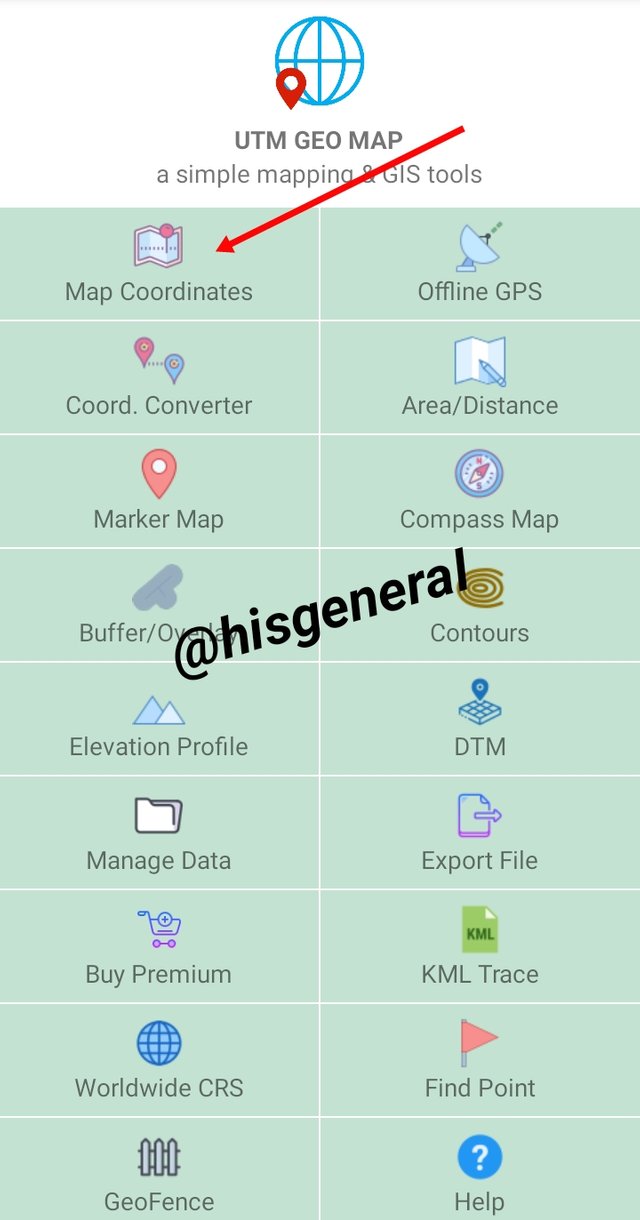 | 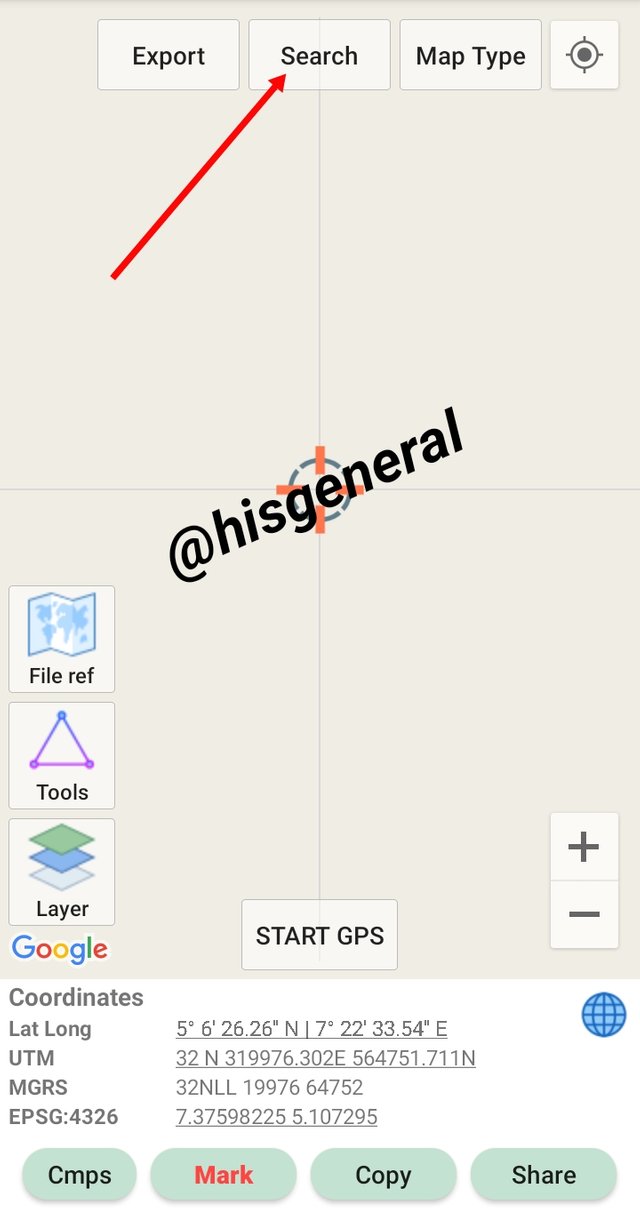 |
|---|
Clicking on the search button introduced me to another interface where I had input the "Easting" and "Northing" coordinates as well as the "Zones" of each of the points I chose and then tapping on "Go" to launch the points. I entered the required information for each of the chosen points and it was all set in.
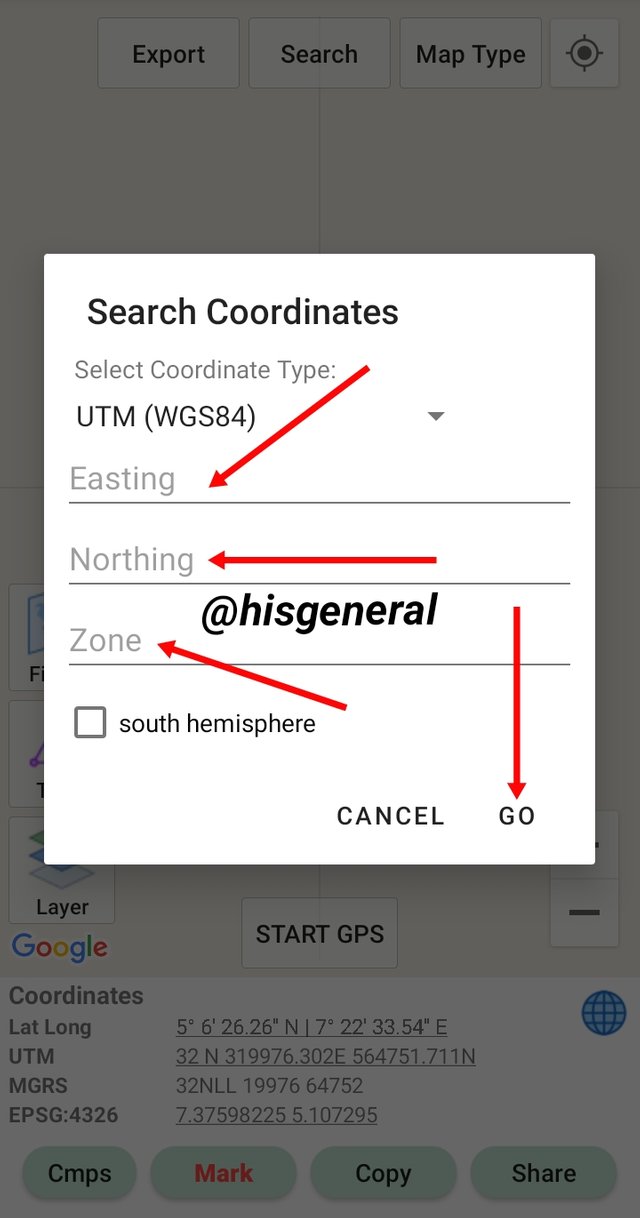 | 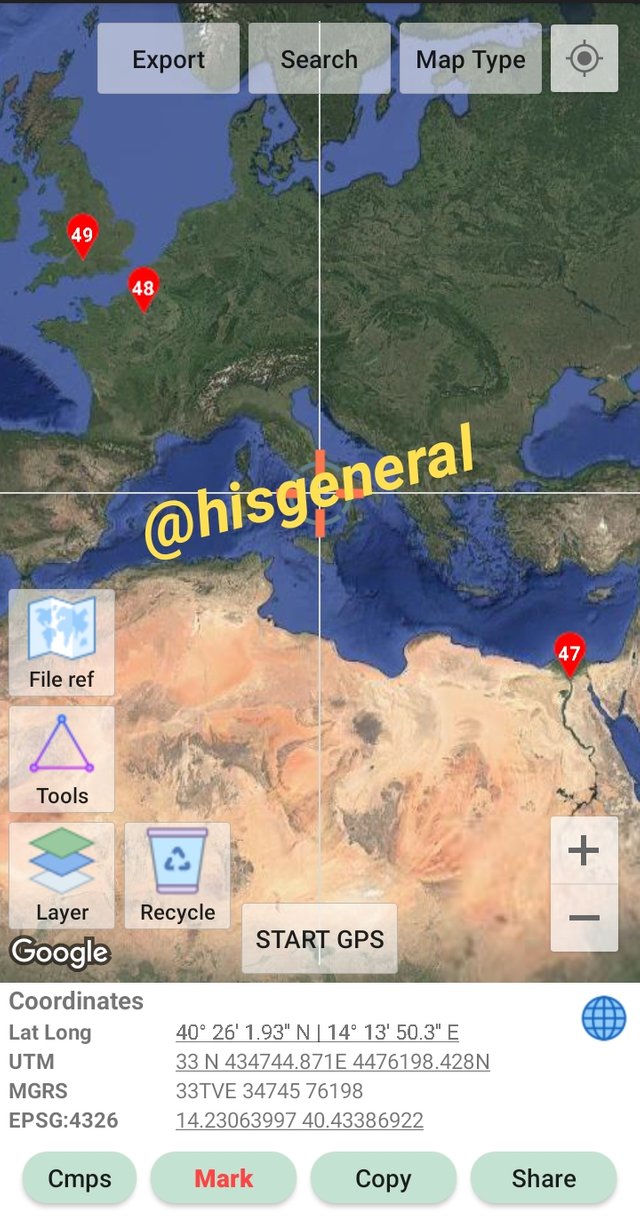 |
|---|
I named these locations according to their points, which are "PT_1", "PT_2", and "PT_5", respectively.
| 3. Export the points you took and save them on your phone (Make sure the file name you save ends in ".kml") |
|---|
The steps for doing this have previously been taught, so I followed suit and had it done.
| 4. Import them into Google Earth and explore the places. |
|---|
To import the KML file, I tapped on the Earth icon located at the bottom left corner of the homepage of the Google Earth app; another interface popped up from where I selected add new (+ new).
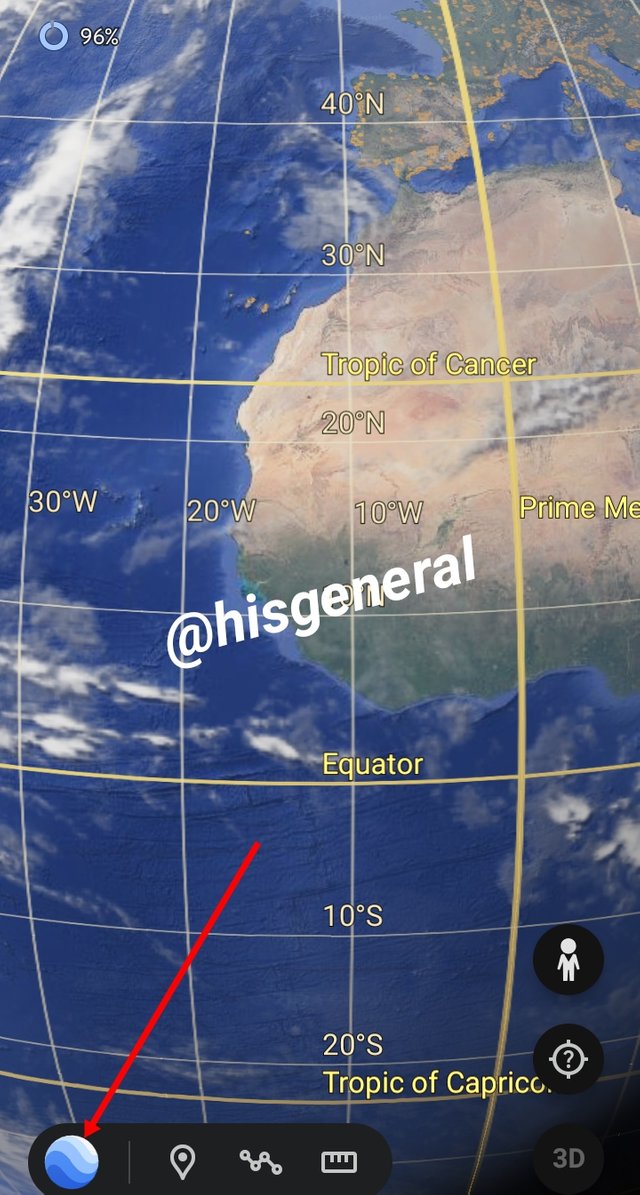 | 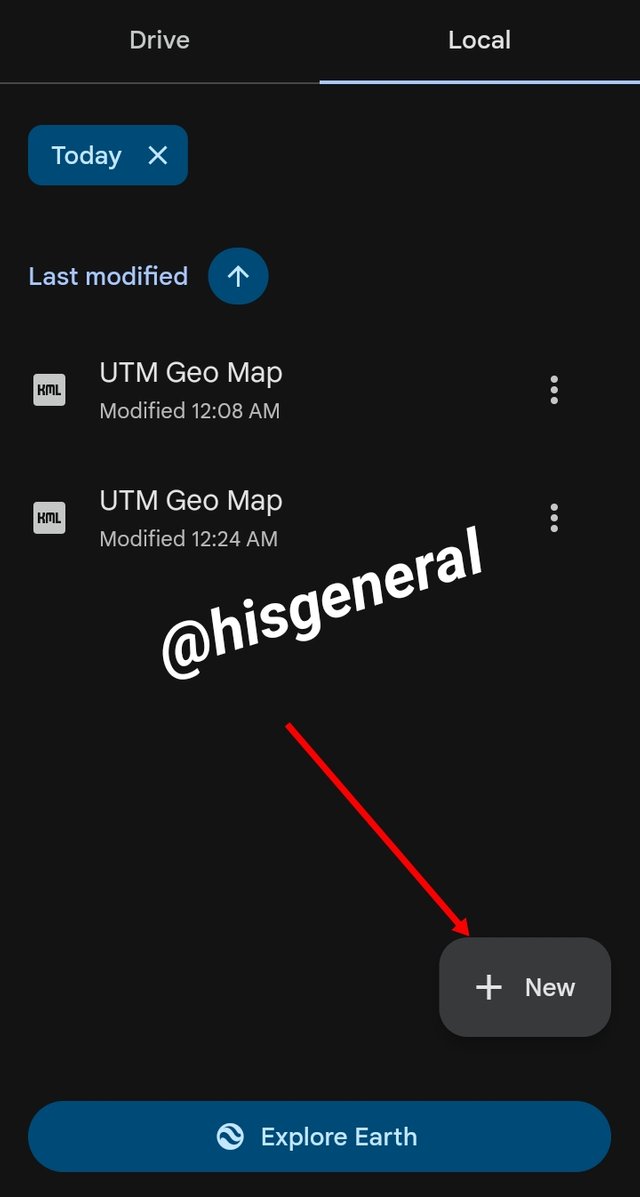 |
|---|
Tapping on the add new opened another dialogue box from which I selected the option that best describes my actions. This is because the file I want to upload or import is on the device. The file was readily available on the next interface so I selected it.
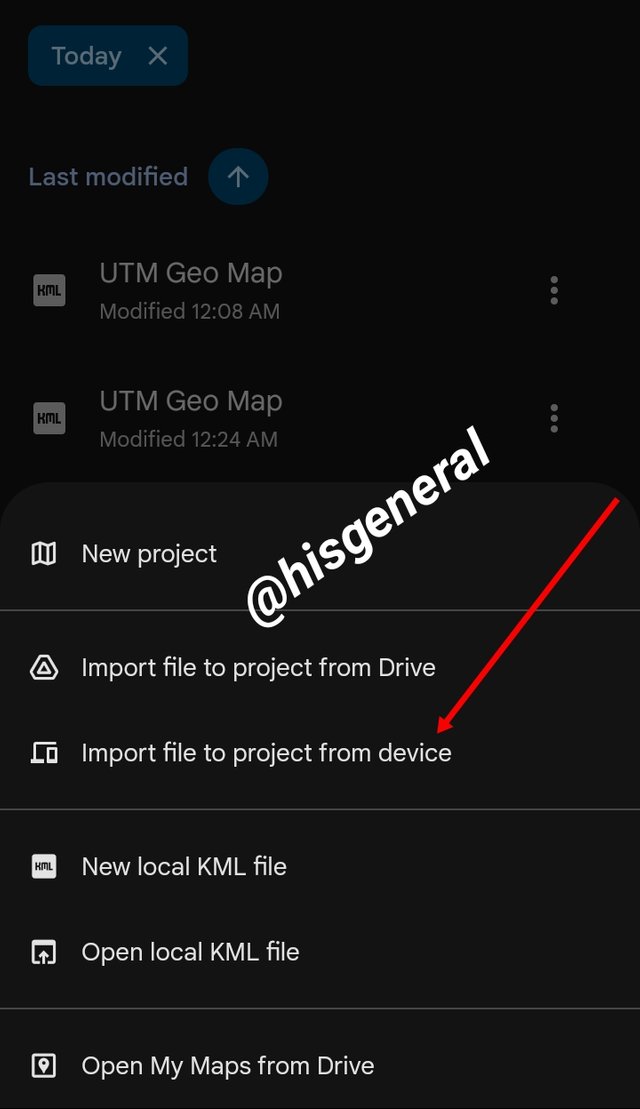 | 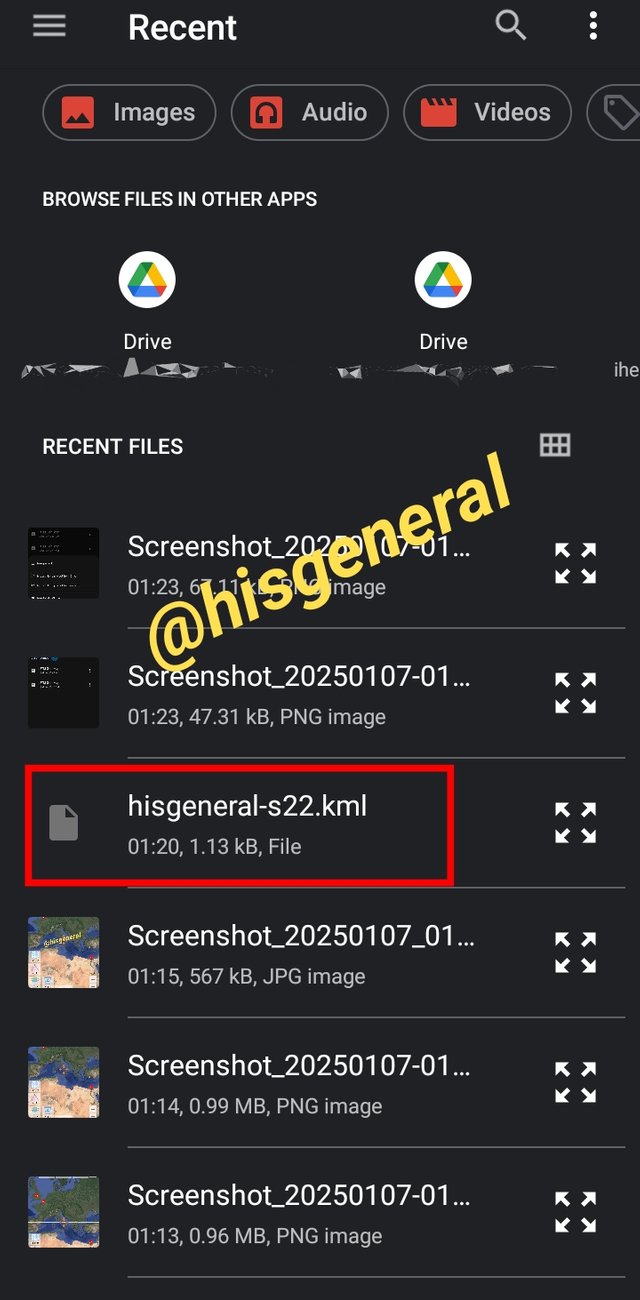 |
|---|
The file is seen to be imported to Google Earth and corresponds to what I have on the UTM Geo Map
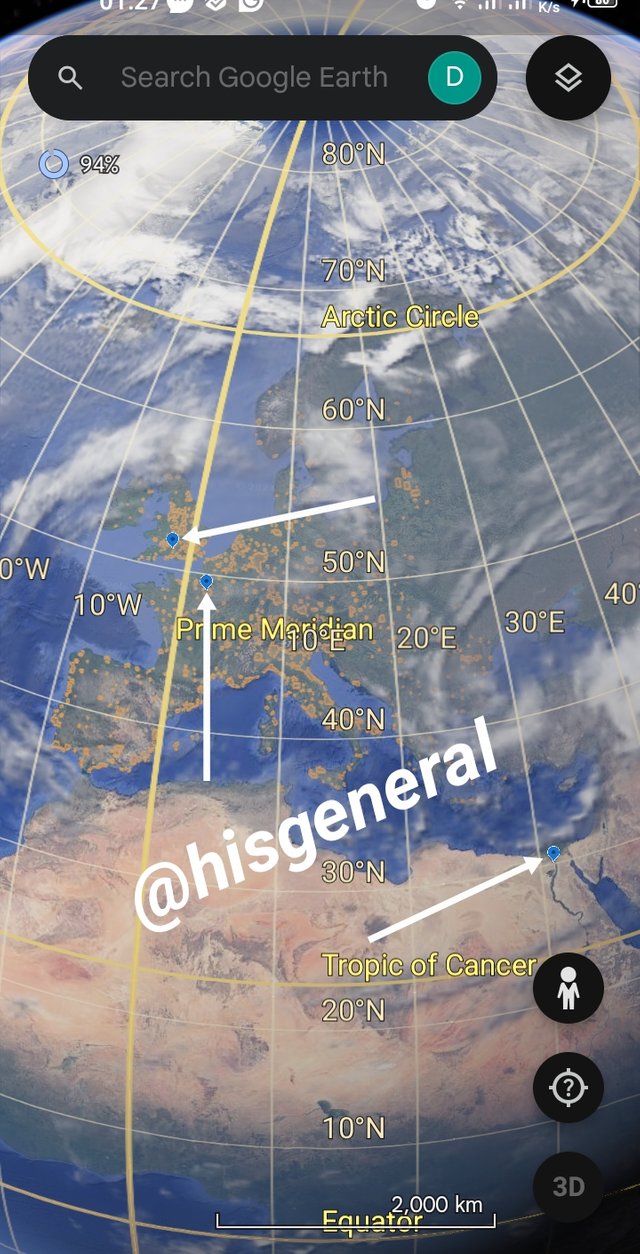 |  |
|---|
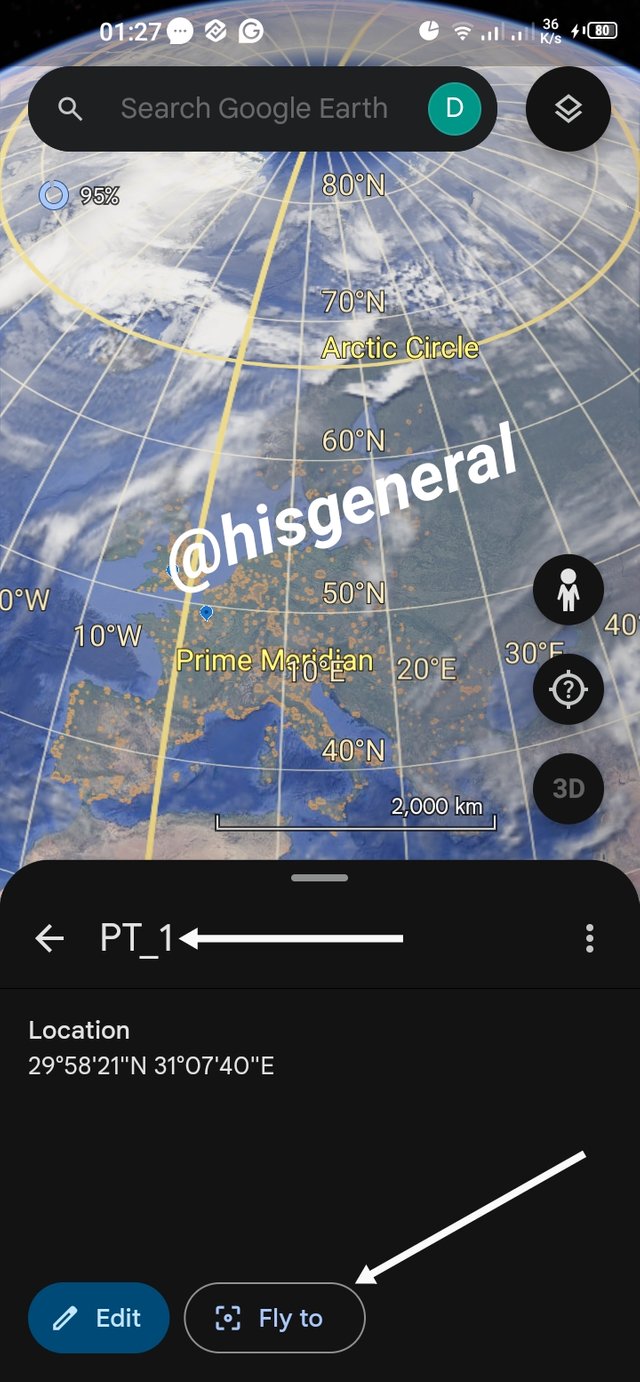
To explore these points, I had to tap on each of them and then click on "fly to". This action launched the point selected, and the same procedure was taken to exploit each one of the points.
This helped to give a clearer view of these points, showing what and/or where they really are.
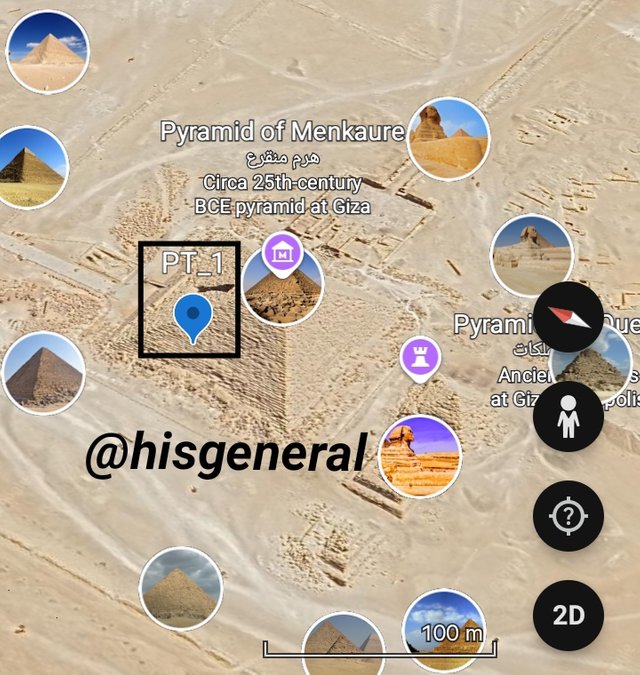
Point 1: The Pyramid of Menkaure
From indication and observation, this point or location is an ancient pyramid dating as far back as the 25th century BCE.
This pyramid is situated in Giza, probably in the southwest of Cairo in Egypt; other pyramids observed around this point are the Pyramid of Khufu and Pyramid Khafre.
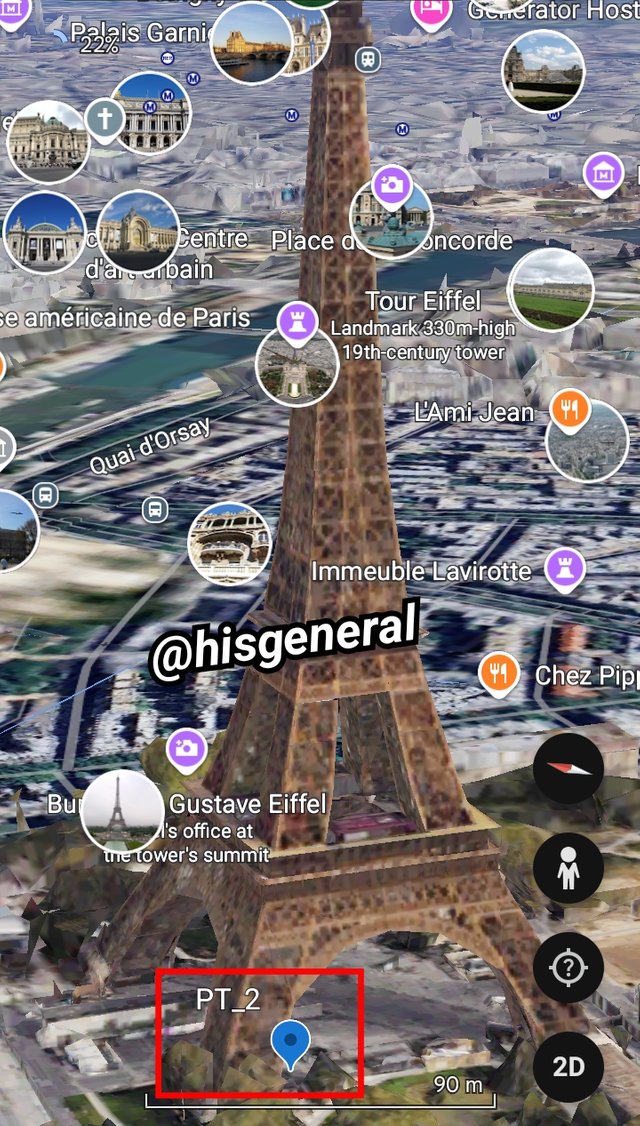
Point 2: The Tour Effiel
From observation, this tower is situated in Paris, France, in a place that looks more like a public park. This tower must be an iconic landmark and symbolic of Paris and France.
It measures 330m high and is a 19th-century tower, making it an ancient and interesting tourist attraction.
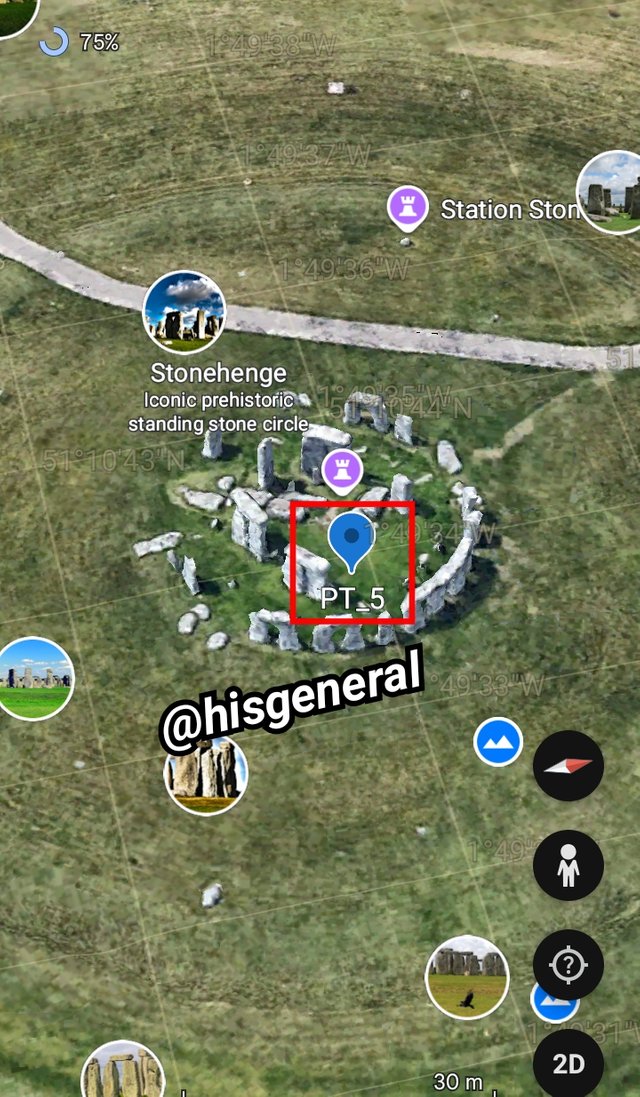
Point 5: The Stonehenge
This location is situated somewhere around Wiltshire, England in the UK. As can be seen, it is an iconic prehistoric standing stone circle, a prehistoric monument, and supposedly one of the well-known old world wonders. Being prehistoric, it must have been raised in different phases around 3000 and 1500 BCE.
| 5. Go back to UTM Geo Map and select one of those places you visited and have a most relevant polygon in the place, trace a bit of Roads and make a 300 meter Buffer. |
|---|
For this question, I will be selecting my point 2, The Tour Effiel. The process of creating a polygon, tracing roads, and creating a buffer has been taught in the previous class; therefore, I will just go straight ahead to attempt these.
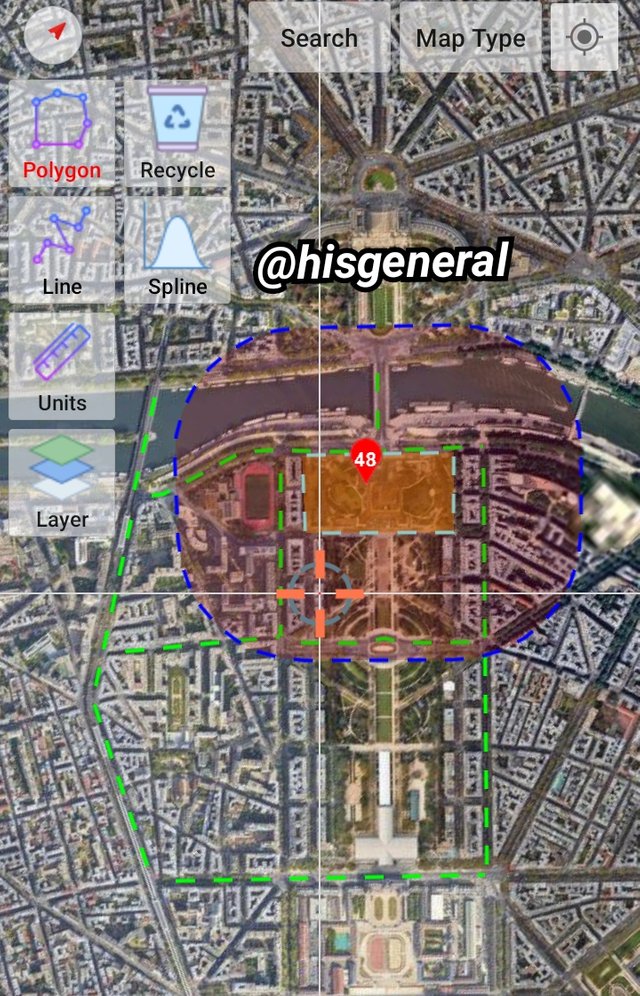
I will be using Google Earth to do this
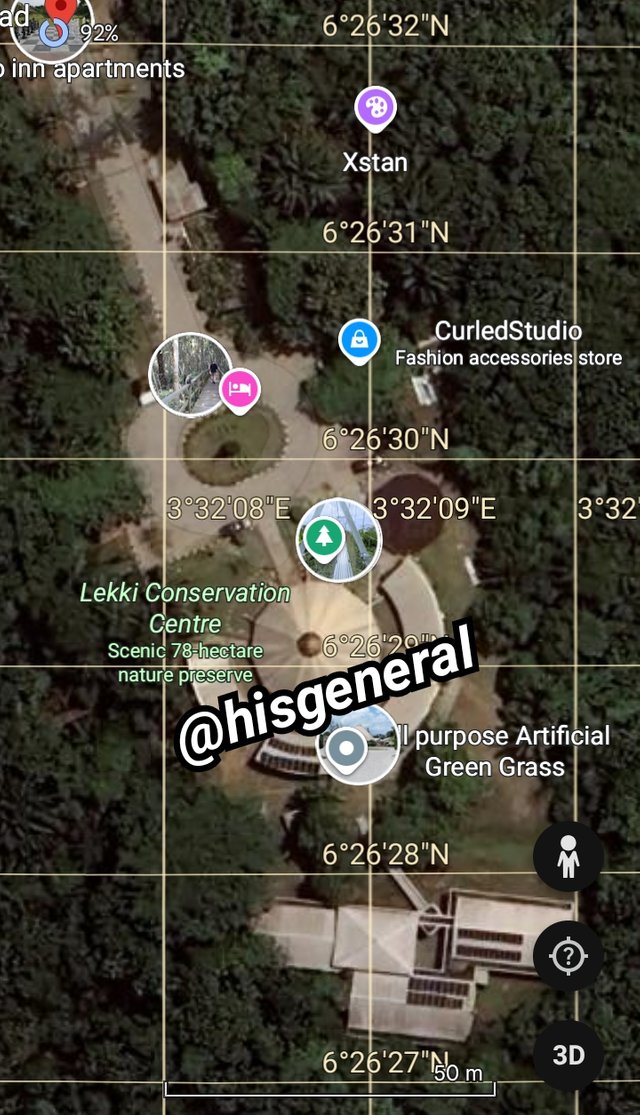 | 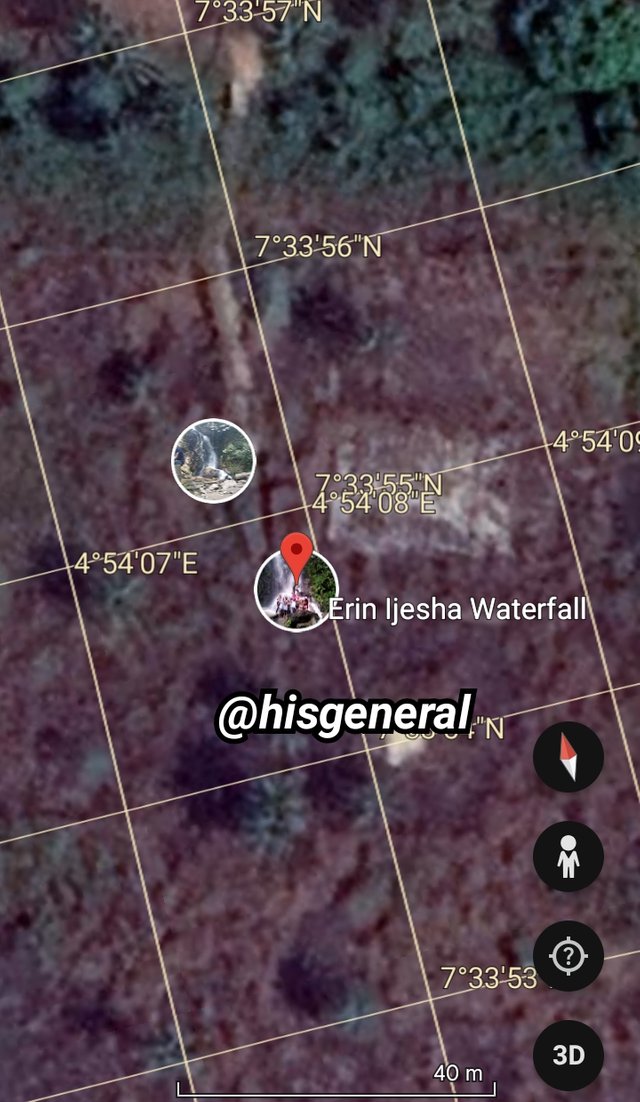 |
|---|
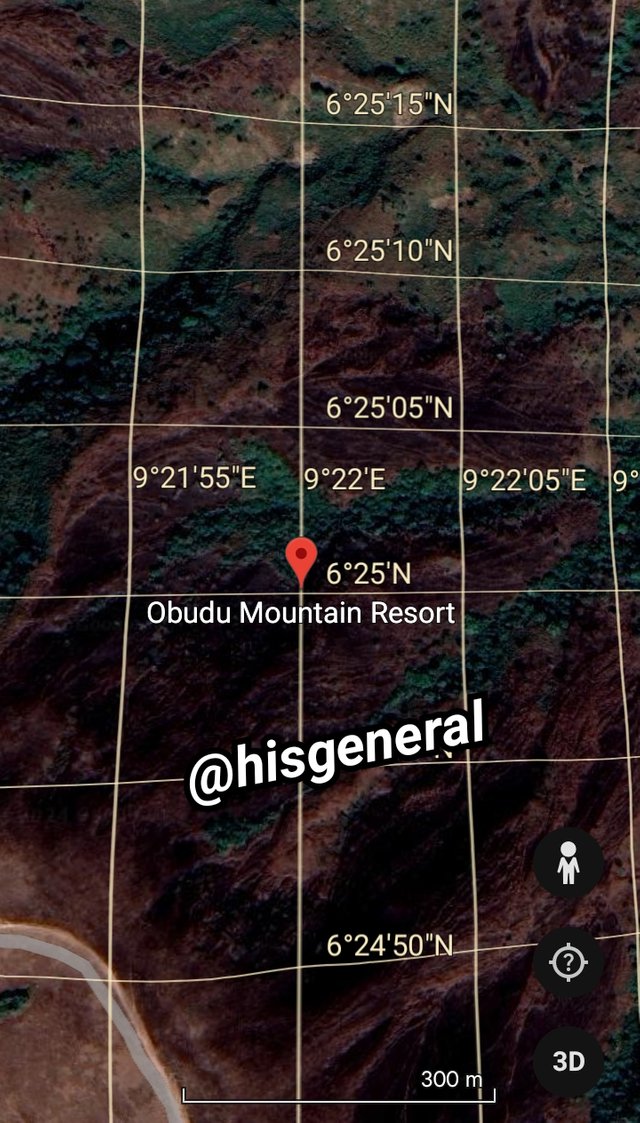 | 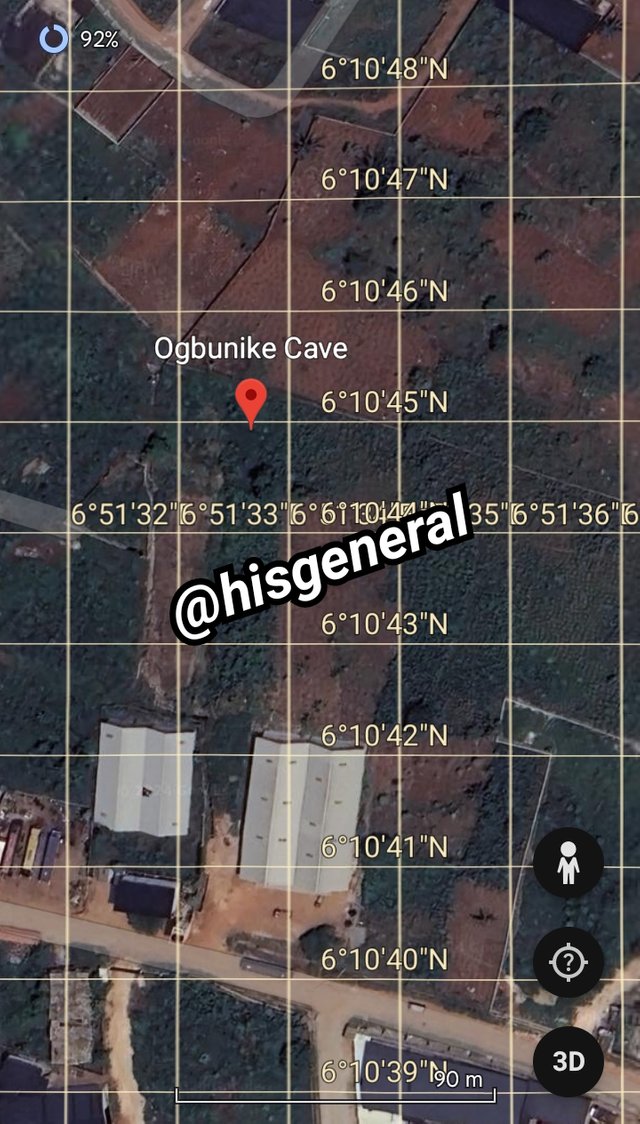 |
|---|
A. On the Google Earth app, I visited Lekki Conservation Center (Lagos State), Erin Ijesha Waterfall (Osun State), Obudu Mountain Resort (Cross River State), and Ogbunike Cave (Anambra State). These places are among the top tourist destinations in my country that have stood not only the test of time but also a revenue-generating source for the nation, showcasing flora and fauna beauty.
B. Ogbunike cave, located in Ogbunike, Anambra State, has existed for centuries, dating as far back as roughly the 16th century, stretching out to about 3.1 miles, measuring 30 meters deep with a narrow entrance opening up into a huge chamber and featuring appealing layers of stalagmites and stalactites.
C. The four places mentioned or highlighted earlier are all tourist destinations or sites in my country, but the one I would like to refer to in response to this question is Lekki Conservation Center.
Lekki Conservation Center, located in Lekki, Lagos State, established by NCF (Nigerian Conservation Foundation) in 1990 is a 78-hectare natural resource conservation, serving as a symbol of biodiversity conversation as well as a center for environmental education.
It has a walkway measuring 401 meters long, making it the longest walkway in Africa, which gives a stunningly beautiful view of the center. It is also a home for diverse wildlife, with a tree house measuring 21 meters high that offers a wide view of the picnic region, visitor's center, children's playground, and reserve.
This conservation center also has a well-equipped library that advocates public awareness as well as environmental education and is open between the hours of 8:30 and 17:00 daily. It is very affordable, and the best time to visit is during the dry season between October and March.